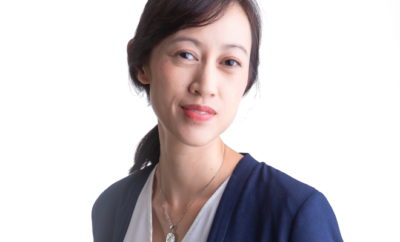
Health x Wellness
Being aware of and managing scoliosis
A survey conducted by the Back Society of Singapore claims that 1 out of 5 Singaporeans suffer from either back or neck pain, and 1 out of 10 Singaporeans experience pain at least once a month.
Sometimes, the “need” to crack your bones or stretch your back after a long day of sitting being seated might not be a straightforward case of back muscle pain, but instead a medical condition called scoliosis .
Scoliosis is when the spine curves to the side, in a “C” or “S” shape.
Some signs of scoliosis include having back pains, or an imbalance in the shoulders, shoulder blades, waist or hips. In more severe cases, it can even cause ribs on one side of the body to protrude outwards.
International Scoliosis Awareness Day took place on 29 June, and is organised to help raise awareness of scoliosis and bring those affected by the condition together as a community.
Dr Leslie Ng, Consultant Orthopaedic Surgeon, from Island Orthopaedic Consultants (A Member of Healthway Medical Group) shares the following information about scoliosis with the Active Age.
Neck and back pain are common conditions in Singapore, with a prevalence of up to 10% in the general population. In the manufacturing industry, this number increases to 30%.
In many cases, the cause of back or neck pain is usually due to work-related musculoskeletal disorder. However, there could be a chance that the underlying cause of one’s aching neck and back could be something else – scoliosis. Work-related musculoskeletal disorder and scoliosis seem to be related conditions, but there is no direct association between the two. Work-related back pain is influenced by posture, work environment factors and individual fitness, whereas scoliosis is an abnormal curvature of the spine. There are also certain types of scoliosis, particularly degenerative scoliosis and severe adolescent idiopathic scoliosis, that may aggravate pre-existing back pain if out of balance.
What is Scoliosis?
Scoliosis is a condition in which the spine curves abnormally to the left or right. There are three main types of scoliosis: congenital scoliosis, developmental idiopathic scoliosis and degenerative scoliosis.
- Congenital and developmental scoliosis are generally associated with genetic predisposition, though in most cases the causes are unknown.
- Developmental scoliosis is most commonly associated with adolescent idiopathic scoliosis and occurs mostly in females (with a 5:1 ratio of female to male cases) and during adolescent growth spurts.
- Degenerative scoliosis is part of the aging process, associated with lumbar disc and facet joint degeneration
Scoliosis itself is a painless condition. However, if the spine deformity is severe, the spine will be out of balance and will result in early muscle fatigue, back pain and manifestation of nerve symptoms due to nerve impingement with sciatica (particularly in degenerative scoliosis).
Developmental scoliosis is estimated to occur in 2-3% of children younger than 16 years old. Fewer than 10% of patients in that group require further treatment. It is a common misconception that scoliosis is caused by carrying heavy school bags, but this is not true.
It remains unclear why females are more prone to scoliosis than males. However, it is clear that hormonal factors and skeletal growth do play a role in the spinal deformity.
What should I do if I have Scoliosis?
If you are diagnosed with scoliosis, do not worry. In most cases, scoliosis does not have any particular clinical symptoms other than appearance. Treatment that follows is usually to address the back pain associated with scoliosis. This generally consists of a combination of posture care, physiotherapy and back core muscle rehabilitation.
In more severe cases of scoliosis where the spine is out of balance and causing back pain, surgical correction is recommended. The surgical correction is a permanent long-term solution that leaves most patients satisfied and happy with the outcome. The implant does not require future follow up procedures, and the patient may continue their normal daily activities and even do sports without restriction.
Maintaining good Spine Health
As the cause of the majority of scoliosis cases are unknown, the general advice doctors give patients is to take care of their spine. Patients can do this by practising good posture care, maintaining a healthy, active lifestyle and engaging in exercises that build their core muscle strength. Parents of young patients usually express concern about whether certain high-impact sports could worsen the deformity of their child’s spine. However, there is no sports activity that may worsen the condition, and in fact, children should exercise to strengthen their bones and muscles.
International Scoliosis Awareness Day
Every last Saturday of June, International Scoliosis Awareness Day is commemorated, by promoting education, early detection and awareness to the public about scoliosis, and to bring together those affected by the condition. Awareness and early detection are important as this allows more time and options for treating the curvature and slowing or stopping the progression. As children’s bones are not yet fully hardened, non-surgical treatments like bracing may be used to prevent progression of the curvature. In Singapore, schools have regular screenings to detect scoliosis in children.







